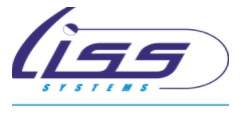Guy Williams, director at Liss Systems
The people of the United Kingdom have spoken, and voted for Brexit, the people of America have spoken and voted for a successful businenessman with no political experience to be their President. Whatever your view the mood is one of unrest and change that has caused the establishment to metaphorically scratch its head about the future.
As it is part of that establishment, it’s worth asking how are the protection industry in both countries responding to the rising double tide of these shifting views and unrelenting dominance of the inter-data-net.
The insurers have an established profile in the eyes of the public but behind the scenes are closely intertwined with the reinsurer and more recently InsurTech businesses that are collectively responsible for the quality and relevance of every protection product the public can, or cannot, buy. So are we continuing to support what might be termed Canute Life, and resisting change, driving targeted new initiatives through Disruption Life or addressing the mass market with Consumer Life?
Although there is no one single silver bullet to solve our complex challenges, working collaboratively not just with our UK networks but also sharing proven best practices between the UK and US is a source of generally untapped innovation. Early days, but this alliance is showing all the signs of being a powerful catalyst to trigger tangible improvement in reducing the well-documented protection ‘gap’.
In the UK, we typically offer 70% of applicants an underwriting outcome following a 20-minute online application process. (STP)
The US market is dominated by a two-year contestability period which means that during the first two years an insurer has the right to question or decline a claim after which it is generally accepted that all claims will be paid. (Now there is the subject of another article.)
This has supported the growth of an entire industry, which provides evidence of medical and pharmaceutical records, often electronically, as well as fluids and medical tests.
Those insurers using automated online underwriting are generally achieving up to 25% STP while the 52-page paper application remains alive and kicking. Expectations are the underwriting process can take 3 months.
Most interestingly, the adage ‘necessity is the mother of invention’ may be at work, as seen at the recent conference held in Chicago by Society of Actuaries.
A strong theme running through the conference was the deployment of data as an underwriting proxy in the US underwriting market. Unlike the UK, many Insurers in conjunction with their reinsurance and technology partners are actively using databased predictive analytics in conjunction with more traditional underwriting methods to underwrite and price protection contracts, to simplify the underwriting process for the customer.
Not just basic data about the car you drive but a full suite of social, demographic and credit data.
The debate has moved from if to how. What is the most appropriate data source for a given book or population, what are the advantages of using credit0based scores from say TransUnion verses data extracted from public records from Lexis Nexis? How does this sit alongside long-established fluid testing tradition?
In addition, a handful of ‘Disruption Lifes’ have sprung up, overcome the apparent unbreakable grip of the lengthy US underwriting processes to offer UK-style STP rates for simple policies aimed at the mass market.
These observations are based on my experience working for a UK technology business that was acquired one year ago by a NASDAQ quoted business with specialist expertise in data and analytics. The benefits of working closely with our US cousins becomes more apparent with each visit, and while geographical boundaries are being redefined and strengthened by Brexit and Trump, technology, good ideas and a willingness to make it easy to buy protection are not geographically constrained.
Much of the platform technology developed in the UK is more advanced than is generally seen in the US. However, from a slow start in the protection industry, Silicon Valley is fighting back with highly innovative solutions which are complementary to our generic UK software solutions. When considered in conjunction with the advances being made in predictive underwriting, maybe the US will leap the UK?
What would happen if the reinsurers and technology firms who spanned both countries shared knowledge, experiences and ideas to export (import) high levels of automated online underwriting to the US and import (export) cutting-edge data sourcing and predictive analysis to the UK?
Customers could access:
- Widespread, easy to buy mortgage-related protection, to address the current situation where the majority of new mortgages are unprotected
- Powerful interactive online guidance, specifically for the mass market, to enable customers to buy, and not just research, online with confidence
- An Amazon experience
Insurers and distributors may gain:
- Reduced operational costs, which could be reinvested into better understanding behavioural economics and attracting new customers
- A response to the changing tide of customer expectations
- A toolbox of technology, supported by the reinsurer community to develop differentiation in the future inter-data-net world
We, the protection people spanning the Atlantic, need to act collectively to ensure innovation is unrestricted by boundaries.

